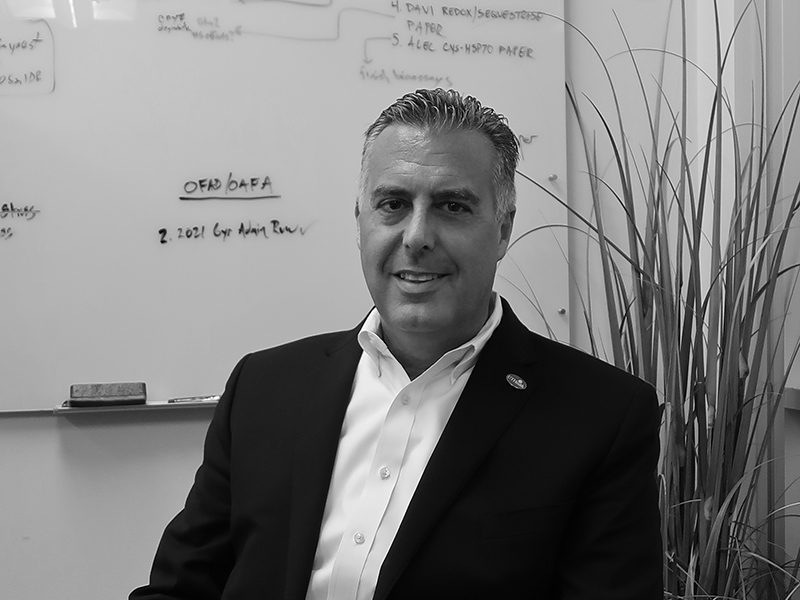Kevin Morano, PhD

Associate Dean for Faculty Affairs
Professor, Microbiology and Molecular Genetics
Associate Vice President of Faculty Affairs and Development Roger J. Bulger Distinguished Professorship
The biggest impact on the administration part is that we’ve got a fairly largish office for administration/faculty affairs, 8 or 9 of us, and by March and April, the suite was completely empty. I made the personal choice to remain onsite throughout this time – I’ve been here 8 a.m. – 6 p.m. during the week, and some of the other senior leadership did similar things, or flexed back and forth from the office to home. But, the majority of the staff have been working at home for 12 months now.
There have been plusses and minuses. It’s really different and quiet in the office now – definitely a minus, lacking that connection, lacking the ability to drop by someone’s desk to see how it’s going, chat about small stuff, remind about a project deadline.
We’re trying to make up for that with a weekly video meeting. We found that it really helped if we held the meeting with the cameras on. Many prefer to meet with the cameras off – they might not be preparing themselves every day like they did when they were going into the office. But, if it’s only a phone call, you don’t get the visual cues. There’s something human about seeing someone face to face. Without that, it feels like there’s something lacking. We’ve been having our video meetings weekly for a year now. The good news is the work is getting done as efficiently or more efficiently than it did at the office. There is no wasted time on the bus, commuting, getting distracted at the office. At home, the work is targeted and efficient. We are still doing the university’s and school’s business in a different way as if nothing happened.
“Here in Houston we have had so many disasters that can interrupt our work, that we have become quite skilled at adapting and coming together to deal with these major operational impacts.”
A big question is how does this change business? Do we bring everyone back, or is there value to saving people time and money to sit at their own house instead of a cubicle? We were already on a trend for years with educating students via video. Do we need a 300-seat lecture hall?
On the research side, we had to balance the imperative of continuing our important research with safety. My colleagues across the country had wide-ranging experiences, with some being shut out of their labs for months. We had a most-accommodating environment through Dr. Blackburn’s careful attention to ways of minimizing risk so that we never shut down. Some lab heads made the personal choice to shutter their labs for a period of time at the peak last spring, but a lot of us, we never shut our labs. We were fortunate to have enough space to social distance, and everyone wore masks. When we weren’t sure about the impacts of transmission through surface contamination, we scrubbed everything all the time as well. We had excellent safety protocols – the on-campus positive rate never went above 3 percent, and less than half of those COVID-19 cases were transmitted at work.
We did a wonderful job reducing risk as far down as we could while still maintaining our research presence. We adapted by moving our research personnel into split shifts so that we kept adequate distancing.
Everyone has had to adapt and be clever. Here in Houston we have had so many disasters that can interrupt our work, that we have become quite skilled at adapting and coming together to deal with these major operational impacts. We have been flexible and accommodating with people, working in a supportive way while following all of the safety rules.
